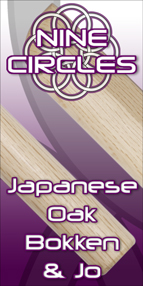The Origins of Martial Arts in the UK

Kenshiro Abbe (1915-1985)
During 1954 the London Judo Society (LJS), a British Judo Association group co-founded by George Chew and Eric Dominy, decided to invite a high ranking Japanese Judo player/teacher to their society, to become their chief instructor. In 1955 and as a result of the LJS decision, a man, who’s credentials were incredible by Japanese standards let alone British ones, arrived in Britain. The man was Kenshiro Abbe (1915 – 1985) and he was single handedly to have more of an impact on British Martial Arts than anyone who had gone before or, for that matter, after.
Abbe Sensei was born in Tokushima province, Japan and was first introduced to Martial Arts by his father, a Kendo teacher ,at the age of 3. Abbe Sensei learnt Sumo wrestling at school and became the regional school champion. In 1931 Abbe Sensei began Judo and one year later, when only 15 years old, was graded 2nd Dan. His Judo prowess grew from there, becoming the Tokushima High schools champion at 16 and receiving his 3rd Dan from the national Martial Arts governing body, the Butokukai.
In 1933 he enrolled at the Butokukai’s special teacher training college and later was graded 5th Dan, graduated and retained as an instructor. In 1935, aged only 18, Abbe Sensei won both the All Japan East/West Tournament and the 5th Dan championships, a pinnacle in competitive Judo. It was around this time that Abbe Sensei began a 10 year study of Morihei Ueshiba’s Martial Art – Aikido and formulated his own Budo philosophy of Kyu Shin Do. Abbe Sensei received his 6th Dan in 1938 and during the war years ran a military training company, where he studied and mastered Jukendo, the way of the Bayonet.
In 1945 the Butokukai graded Abbe Sensei 7th Dan Judo and 6th Dan Kendo and in 1949 he took up the position of chief instructor to the Kyoto Police and the Doshisha University. Six years later Abbe Sensei was teaching in Britain. Although initially invited by the LJS to be their chief instructor, a series of disagreements resulted in Abbe Sensei parting company with them. The stage was set for Abbe Sensei to teach pure Kyu Shin Do to the British and in order to achieve this Abbe Sensei formed a number of martial Arts Councils, including the British Judo Council (BJC), the British Kendo Council, the British Karate Council, etc. as well as an overall governing body – the International Budo Council (IBC). It was through these various councils that, by 1957, Abbe Sensei had introduced Kendo (the way of the sword), Aikido (the way of spiritualharmony), Kyudo (the way of the bow), Jukendo (the way of the bayonet), Iaido (the way of sword drawing), Yarido (the way of the spear) and Naginatado (the way of the halberd) to Europe.
Around this time (1956) OTani, by then a 5th Dan, made contact with Abbe Sensei and very soon began training under him. By 1958 O’Tani had been given the position of national coach to the BJC. The early 60’s were to prove very exciting for British Martial Artists and Abbe Sensei was instrumental in inviting leading Budo teachers to Great Britain, including Nakazono Sensei – 6th Dan Aikido and Harada Sensei – 6th Dan Shotokai Karatedo.
In 1964 Abbe Sensei returned to Japan in order to see the Olympics hosted in his home land and Judo represented for the first time. It was 5 years later that he finally returned, his delay being caused by an old injury to his neck, that had gradually got worse since the car accident that caused it, back in 1960. What he returned to was a near dormant IBC and a BJC that had changed course in his absence. He felt that, instead of studying the truth of Budo, most BJC members only wanted the physical instruction, misunderstanding the origins of the teaching and consequently corrupting the essence of Abbe Sensei’s KyuShin Do philosophy.
Subsequently Abbe Sensei set about redressing the situation, virtually dismantling the BJC and leaving in place only those worthy to help in the reconstruction. O’Tani was made president of the BJC and graded 8th Dan. O’Tani was also left in charge of the IBC, with a number of other loyal students. In 1970 Abbe Sensei returned to Japan and in the same year O’Tani merged the MOSJ into the BJC. During the early and mid 70’s the management of both the BJC and IBC became difficult for O’Tani and those that had been left to continue Abbe Sensei’s teachings. In 1978 the BJC severed it’s links with the now ‘all but’ redundant IBC. Since then many organisations have sprung up, promoting the Kyu Shin Do philosophy, but few truly grasp what Abbe Sensei meant.
Abbe Sensei sadly passed away on December 1st 1985
This page is an abridged version of a article `The Origins of Martial Arts in the UK` authored originally by Nigel Porter.
Entering Amazon from here supports the BAB.



